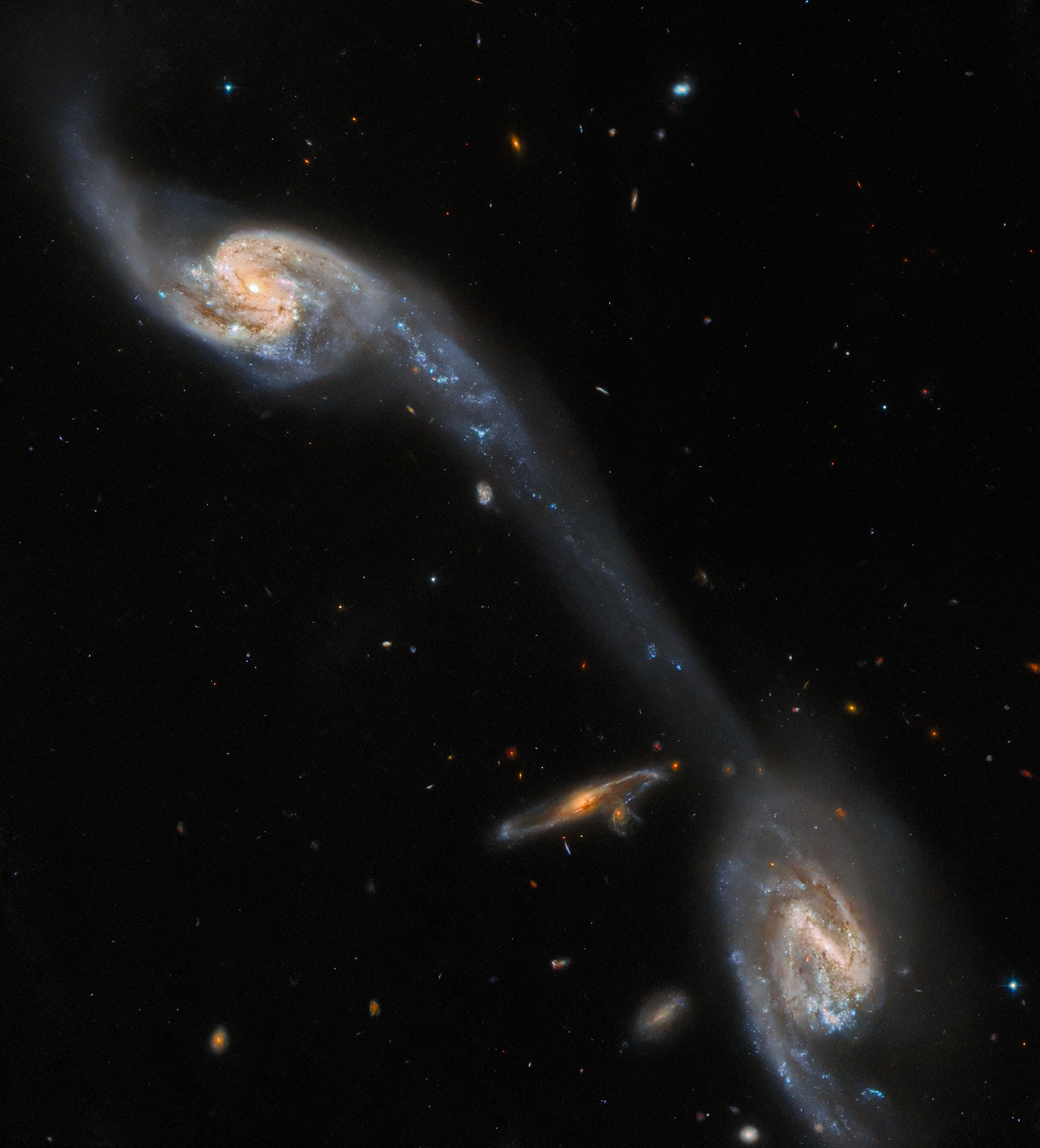This week’s image from the Hubble Space Telescope shows two of a set of three interacting galaxies called Arp 248. This group, also known as Wild’s Triplet, consists of three small spiral galaxiesthat are linked together by bridges of stars.
Located 200 million light-years away in the constellation of Virgo, the trio are named for the Australian astronomer Paul Wild, who was a prominent solar researcher and who studied the group in the 1950s.
Interacting galaxies are those whose gravitational fields affect one another, and in this case the gravity binding the three together has resulted in bright bridges seen stretching between two of the galaxies in this image. The bridge glows with starlight and contains dust as well as stars, forming an elongated region called a tidal tail that is created by the pull of the galaxies on each other.
Hubble has shared a number of images of interacting galaxies recently, including two other interacting spiral galaxies whose gravitational effects on each other are more subtle, as well as a pair of galaxies that look like they are interacting, but are actually just overlapping as one is closer to us than the other. The full drama of galaxies merging can be seen in a stunning image from the Gemini North telescope or in a recent James Webb image that shows the bright effects of a merger in the infrared range.
Editors’ Recommendations

